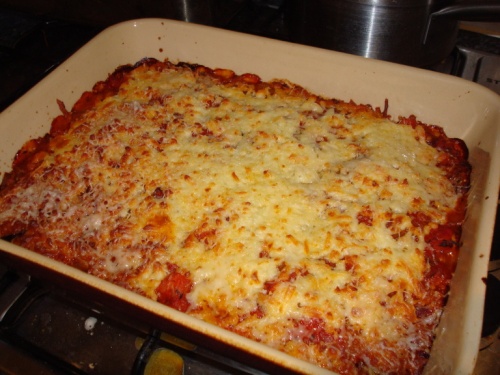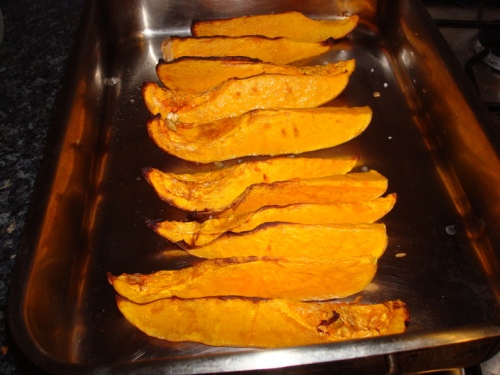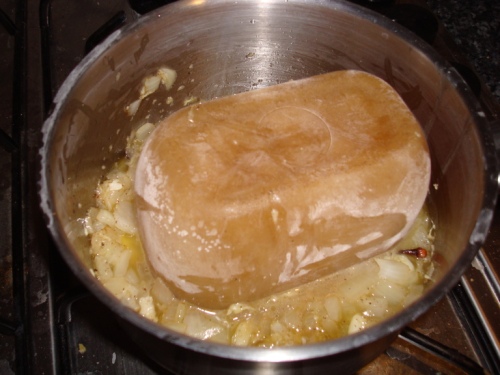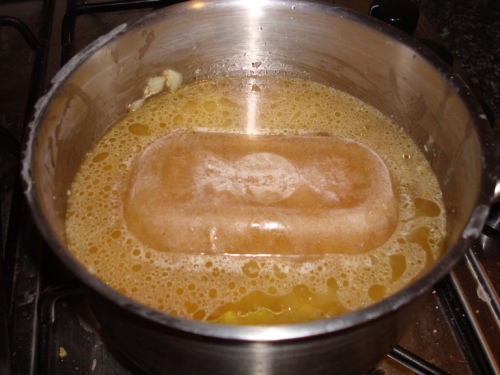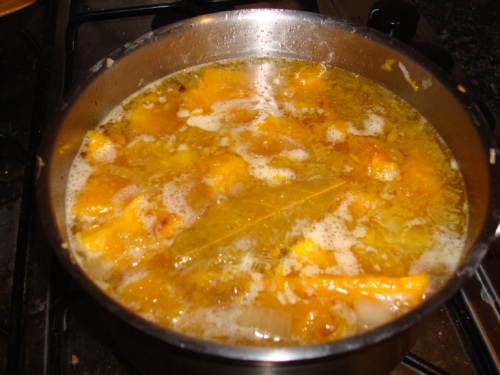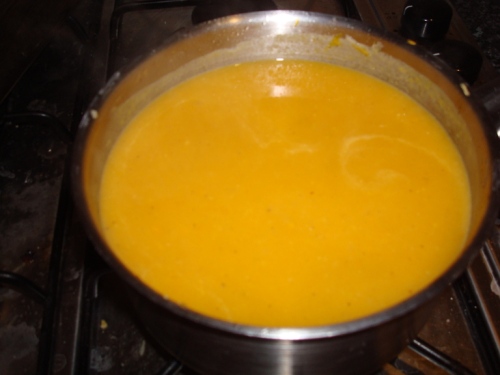I have some brown miso paste, which makes very odd miso soup. It’s too dark, rich, and vaguely reminiscent of beef stock.
Hmmm. Idea.
A load of onions got cooked slowly in the sauté pan, with some butter, a single clove (crumbled), a teensy bit of sugar, salt, pepper, and a bay leaf. For about an hour, ’til they were a deep golden colour. The pan was then deglazed with a teensy splash of Madeira.
After this the onions went into a saucepan of hot miso. Looked right. Smelt right. Tasted awful. Just didn’t work at all.
Fortunately, there was another saucepan full of run-of-the-mill Marigold boullion, and I had only sacrificed half the onions. So the remainder went to the other saucepan, and disaster averted.
Croutons, Comté, and an overhead grill completed the happiness.
Still not sure what you do with brown miso paste.

